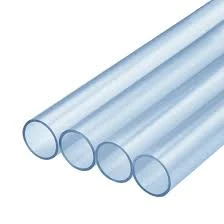Oct . 13, 2024 20:32 Back to list
ppr pipes and fittings
Understanding PPR Pipes and Fittings Features, Benefits, and Applications
PPR, or Polypropylene Random Copolymer, has become a popular material for piping systems across various industries. Its durability, flexibility, and resistance to various environmental factors make it an ideal choice for a wide range of applications, from residential plumbing to industrial installations. In this article, we will delve deeper into PPR pipes and fittings, exploring their features, benefits, and common applications.
Features of PPR Pipes
PPR pipes are known for their unique characteristics that set them apart from conventional piping materials such as metal and PVC. One of the most notable features of PPR pipes is their excellent thermal resistance. They can withstand temperatures of up to 95°C (203°F) without compromising structural integrity, making them suitable for hot water applications. Additionally, PPR pipes have a low thermal conductivity, which minimizes heat loss in hot water systems.
Another significant feature is their high resistance to chemicals. PPR pipes do not corrode or rust, even in aggressive environments. This attribute makes them ideal for transporting various liquids, including corrosive substances, without the risk of contamination or leaks. Furthermore, PPR pipes are lightweight and easy to handle, which simplifies the installation process and reduces overall labor costs.
Benefits of PPR Fittings
PPR fittings are designed to complement PPR pipes, ensuring a seamless and efficient piping system. One major benefit of using PPR fittings is their ability to create a secure and leak-proof joint. When properly welded, PPR fittings form a permanent bond with the pipes, providing a system that can withstand high pressure and temperature variations. This feature ensures reliability and minimizes maintenance issues over time.
ppr pipes and fittings

Additionally, PPR fittings are resistant to heat and pressure, which contributes to the overall durability of the piping system. Unlike metal fittings that may expand or contract with temperature changes, PPR fittings maintain their shape and integrity, further enhancing the system’s longevity. In terms of installation, the use of PPR fittings is straightforward, requiring only basic tools for welding, which results in faster project completion.
Applications of PPR Pipes and Fittings
Given their versatile nature, PPR pipes and fittings can be employed in a variety of applications. One of the most common uses is in residential plumbing systems. Homeowners and contractors increasingly choose PPR pipes for hot and cold water distribution due to their durability and reliability. The absence of rust and corrosion also makes them a preferred option for potable water systems, ensuring clean and safe water supply.
In addition to residential use, PPR pipes and fittings are widely utilized in commercial and industrial applications. They are commonly used in heating systems, including underfloor heating and radiator connections, due to their excellent thermal insulation properties. Furthermore, in the agricultural sector, PPR pipes can efficiently transport irrigation water, benefiting farmers by providing a durable solution that withstands external elements.
Another significant area of application is in the chemical industry, where PPR pipes are used to convey a range of substances, including acids and bases. Their chemical resistance ensures that the integrity of the piping system remains intact, preventing leaks and potential hazards. Additionally, the pharmaceutical industry benefits from PPR piping systems, as they comply with hygiene standards and minimize contamination risks.
Conclusion
PPR pipes and fittings present a robust solution for various piping needs across numerous industries. Their unique features, such as thermal resistance, chemical stability, and lightweight nature, combined with the secure and durable connections provided by PPR fittings, make them an attractive choice for both residential and industrial applications. As the demand for efficient and reliable piping systems continues to grow, PPR technology is likely to play an increasingly important role in modern construction and infrastructure development. Whether for home plumbing, industrial processes, or agricultural needs, PPR pipes and fittings stand out as a reliable and effective choice for any piping project.
-
Durable PVC-M Water Supply Pipes | 60-Year Life
NewsAug.04,2025
-
Premium HDPE Water Supply Pipes: Durable & Leak-Proof
NewsAug.03,2025
-
Premium PVC-M Water Supply Pipe - Durable & Efficient
NewsAug.02,2025
-
Premium PP Welding Rod: GPT-4 Turbo Enhanced
NewsAug.01,2025
-
HDPE Drainage & Irrigation Pipe - Durable, Efficient Solutions
NewsAug.01,2025
-
Premium PVC Transparent Pipe: Durable & Clear Solutions
NewsJul.31,2025

